BEST VIEWED IN LANDSCAPE MODE ON MOBILE DEVICES
U.S.FTC GUIDELINES PLEASE NOTE: we act as an affiliate for several companies that feature on our website. In some cases we may earn a commission from referrals to those companies. For further information please refer to our Privacy and Disclaimer policies which can be found in the "US" tab.
U.S.FTC GUIDELINES PLEASE NOTE: we act as an affiliate for several companies that feature on our website. In some cases we may earn a commission from referrals to those companies. For further information please refer to our Privacy and Disclaimer policies which can be found in the "US" tab.
New Zealand jade is a beautiful material, and is used in traditional Maori art.
New Zealand jade, known as pounamu by Maori, and greenstone, a name
given to it by early settlers to New Zealand, is an ornamental stone,
often used to produce stunning Maori jewellery and ornaments.
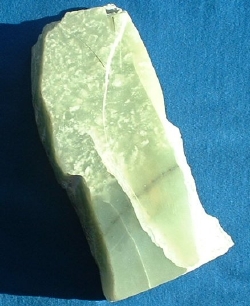
In times past, it was used in Maori weapons, mainly for axe and spear heads.
Jade is found only on New Zealand's South Island, where it's extraction is closely controlled.
Hokitika, a township in the West Coast NZ region on New Zealand's South Island, is acknowledged as the New Zealand jade capital.
In Hokitika you will find various artisans carving jade into a variety of jewellery and ornaments, and there are various retail outlets where you can watch them at work, and purchase their products.
Nephrite jade, as found in New Zealand, has a very vibrant colour, and is often marked with darker shades. The most prized nephrite jade is known as flower jade, and is marked with paler green shades.
|
Make your own jade necklace If you are in the Hokitika area, why not book the Greenstone Tour? You will learn about the close association of the Maori people with jade, and will search the banks of the sacred Arahura River for your own piece of jade. Then, you will turn your find into a necklace to keep as a momento of your tour. |
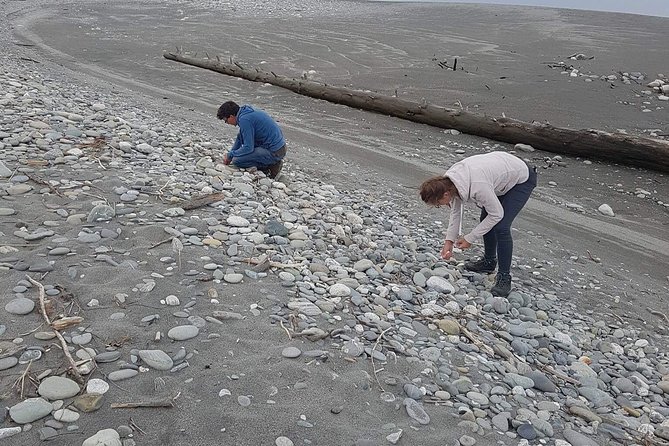 |
Description and Meaning of Jade Pieces
The various shapes have very important meanings for the indigenous
New Zealand Maori people.
Here are descriptions for the most common shapes:
|
Koru The Koru depicts the new growth of the punga fern, and symbolises new life. A double Koru represents the bond between two people. |
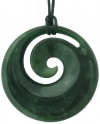 |
|
The Hook The fish hook or 'Hei Matau' in Maori means 'Prosperity'. Traditionally, fish hooks used by the Maori were made from bird bones. In later times, the introductyion of diamond tools has allowed production from jade. These hooks are not used for fishing, but for ornamental jewellery |
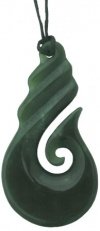 |
|
The Manaia This widely used twisting form is presented in many ways, taking on a variety of styles. The constant in all Manaia is the inclusion of the eye. Some believe that Manaia is derived from the word mana, meaning influence or prestige. It can also mean containing mana, or causing something to have mana |
 |
|
The Twist The Twist symbolises "Eternity", and comes in various forms reflecting the many paths that we cross during our life. It can also point to the ties between family and friends. |
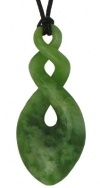 |
|
The Tiki The Tiki is symbolic of the first mortal born of the Gods. It is also a fertility symbol, as depicted by the hands on the loins. The Tiki is also a good luck charm and is often worn to ward off evil spirits. It is thought that it brings knowledge and clarity. |
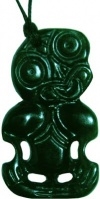 |
